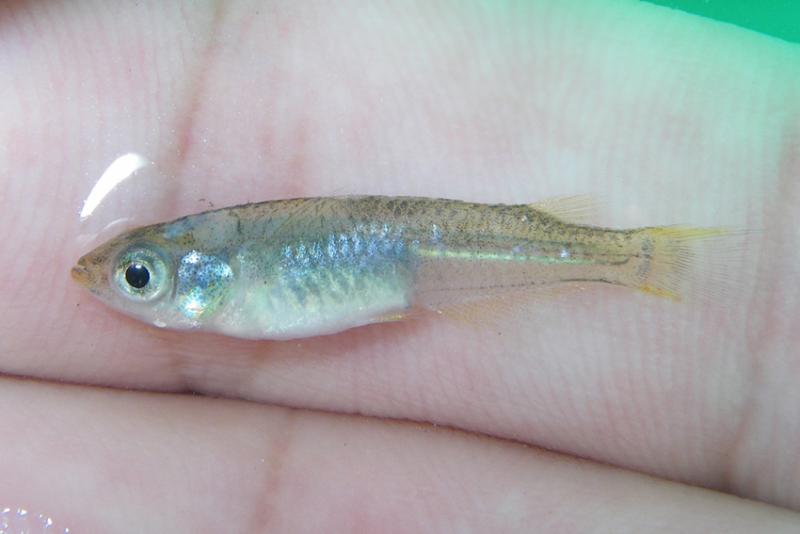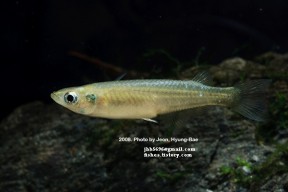
Oryzias latipes
FAMILY
Adrianichthyidae
TAXONOMY
Poecilia latipes Temminck and Schlegel, 1846, Japan.
OTHER COMMON NAMES
English: Japanese medaka, tooth-carp; German: Japan-
Reiskдrpfling; Cantonese: Fut mei dzeung ue; Japanese:
Medaka.
PHYSICAL CHARACTERISTICS
Maximum length 1.6 in (4 cm). Small and shallow bodied, with
upturned mouth and silvery olive coloration. No spines in dorsal
or anal fins. Many strains of captive-raised Japanese rice
fish have been selectively bred for pale yellow color. Strains
that appear red or mottled black and gold have also been developed.
DISTRIBUTION
Japan, Korea, China, and Vietnam, as well as the great rivers
of Southeast Asia: the Mekong, Red, Irrawaddy, and Salween.
HABITAT
Calm stretches of streams, rice paddies, and wetlands.
BEHAVIOR
Forms schools, generally peaceful.
FEEDING ECOLOGY AND DIET
Feeds on zooplankton and insects, as well as some detritus and
plant material.
REPRODUCTIVE BIOLOGY
Fertilization is external, although the eggs are carried for a
short time, stuck to the female’s abdomen, prior to deposition.
Females can produce broods of 10–40 eggs every two days during
the breeding season. Eggs are slightly larger than 0.039 in
(1 mm) in diameter and usually hatch in 8–14 days.
CONSERVATION STATUS
Not threatened.
SIGNIFICANCE TO HUMANS
Used widely in experimental research, also found in the aquarium
trade.
Other popular Animals
Photo Gallery of - Japanese rice fish





 Animalia Life
Animalia Life